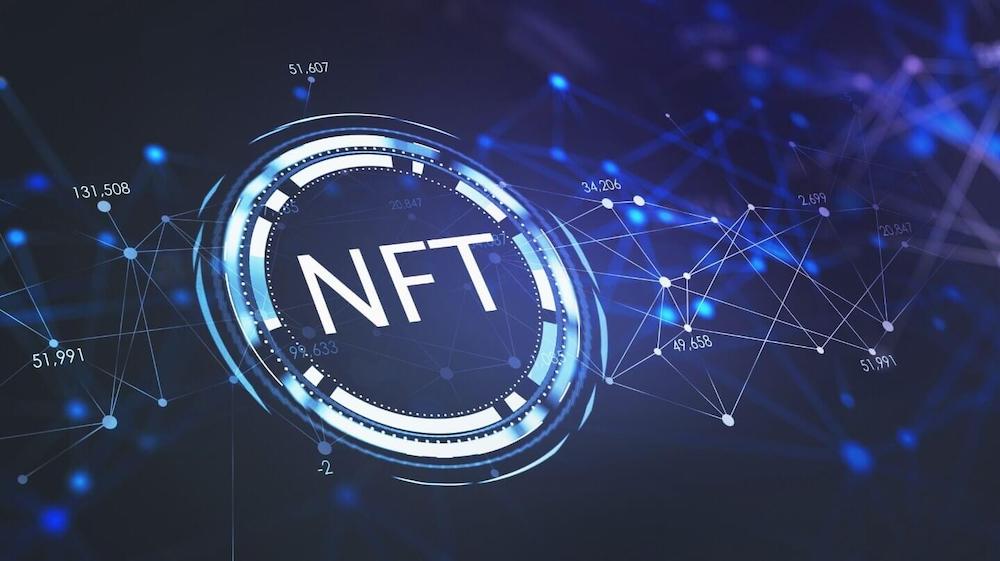
The colossal edifices that define our world – bridges, skyscrapers, bustling cities – all stand as testaments to the enduring legacy of the construction industry. Yet, beneath this surface of progress lies a persistent undercurrent of inefficiency. Traditional construction methods are often plagued by fragmentation, hampered by project delays, budget overruns, and a lack of transparency amongst stakeholders. However, a new dawn is upon us. Fueled by the transformative potential of blockchain and Non-Fungible Tokens (NFTs), a technological revolution is poised to reshape the construction landscape. By fostering enhanced efficiency, transparency, and collaboration, these disruptive technologies can pave the way for a more streamlined, secure, and sustainable approach to building the world of tomorrow.
Blockchain: A Decentralized Ledger for Trust and Security
At the heart of this transformation lies blockchain, a distributed ledger technology (DLT). Imagine a secure, tamper-proof database shared across a network of computers. Every transaction or data entry is chronologically recorded in blocks, linked and validated by all participants. This eliminates the need for a central authority, promoting trust and transparency within the ecosystem.
Here’s how blockchain can be a game-changer in construction:
-
Enhanced Contract Management: Smart contracts, self-executing agreements stored on the blockchain, can automate contractual processes. When predefined conditions are met (e.g., project milestone completion), payments are automatically released, eliminating delays and disputes.
-
Improved Supply Chain Transparency: Tracking the origin and movement of materials throughout the supply chain becomes seamless. Blockchain can verify the authenticity of materials, ensuring compliance with sustainability and quality standards. This not only mitigates risks associated with counterfeit materials but also promotes ethical sourcing practices.
-
Secure Document Management: Important project documents like contracts, building plans, and inspection reports can be securely stored on the blockchain. This ensures immutability, preventing unauthorized alteration and facilitating easy access for all authorized personnel.
-
Streamlined Dispute Resolution: With a transparent record of every transaction and communication, disputes can be resolved efficiently. The immutable nature of the blockchain provides a verifiable audit trail, eliminating ambiguities and simplifying claims processes.
NFTs: Building Blocks for Digital Ownership and Innovation
Non-Fungible Tokens (NFTs) are digital certificates of ownership for unique virtual or physical assets. Think of them as digital deeds, stored on the blockchain, that represent ownership of something irreplaceable. Here’s how NFTs can transform the construction sector:
-
Fractional Ownership of Real Estate Projects: NFTs can represent fractional ownership of buildings or infrastructure projects. This opens up new avenues for investment, allowing individuals with smaller budgets to participate in high-value ventures.
-
Digitized Building Passports: An NFT can act as a digital passport for a building, containing its entire history – construction materials used, maintenance records, energy efficiency data, and ownership history. This facilitates transparency and informed decision-making for investors and future occupants.
-
Tokenized Construction Assets: Heavy machinery or specialized equipment can be represented by NFTs, simplifying ownership tracking, rental agreements, and maintenance schedules. This can improve asset utilization and liquidity within the construction industry.
-
Enhanced BIM Integration: Building Information Modeling (BIM) systems, which create digital representations of a building, can be integrated with NFTs. This can enable the tracking of individual components within a building, facilitating maintenance and future renovations.
Building the Future: Challenges and Considerations
While the potential of blockchain and NFTs in construction is undeniable, several challenges need to be addressed for widespread adoption:
-
Industry-Wide Adoption: Shifting from traditional methods to a blockchain-based ecosystem requires buy-in from all stakeholders – architects, engineers, contractors, and regulatory bodies. Building trust and fostering collaboration will be crucial.
-
Scalability and Infrastructure: Blockchain technology is still evolving, and its scalability needs to improve to handle the vast amount of data generated in complex construction projects. Upgrading infrastructure and developing industry-specific solutions are vital.
-
Regulatory Landscape: The legal and regulatory frameworks surrounding blockchain and NFTs in the context of construction are still nascent. Developing clear regulations that foster innovation while mitigating risks will be essential.
-
Technical Expertise: Integrating blockchain and NFTs requires specialized skills and training. Upskilling the workforce and creating educational opportunities for construction professionals will be necessary.
Collaboration is Key: Towards a Brighter Future
The transformative potential of blockchain and NFTs in construction can only be realized through a collaborative effort. Here’s how different stakeholders can contribute:
-
Construction Companies: Early adopters can pilot projects utilizing blockchain and NFTs, demonstrating their benefits and paving the way for wider adoption.
-
Technology Providers: Developing user-friendly and industry-specific blockchain and NFT solutions tailored to the needs of the construction sector is crucial.
-
Government and Regulatory Bodies: Creating clear and adaptable regulations that facilitate innovation while ensuring security and consumer protection is essential.
-
Academia and Research Institutions: Conducting research on the application of blockchain and NFTs in construction, and fostering educational opportunities for professionals, will be key drivers of progress.
Trending Innovative Solutions with Blockchain and NFTs in Construction
The construction industry is undergoing a digital transformation, with blockchain and NFTs emerging as powerful tools to revolutionize how we plan, build, and manage structures. Here are the top 10 trending innovative solutions in this space:
-
Smart Contracts for Automated Payments and Workflows: Smart contracts, self-executing agreements stored on the blockchain, automate payments upon completion of predefined milestones. This eliminates delays, reduces administrative burdens, and fosters trust between contractors and project owners.
-
Secure Document Management with Immutable Records: Project documents like blueprints, contracts, and inspection reports can be securely stored on the blockchain, ensuring immutability and tamper-proof records. This facilitates easy access for authorized personnel and simplifies document management throughout the project lifecycle.
-
Enhanced Supply Chain Transparency with Blockchain Tracking: Tracking the origin and movement of materials throughout the supply chain becomes seamless with blockchain. This verifies the authenticity of materials, promotes ethical sourcing practices, and mitigates risks associated with counterfeit or substandard materials.
-
Fractional Ownership of Real Estate Projects with NFTs: NFTs can represent fractional ownership of buildings or infrastructure projects. This opens new avenues for investment, allowing individuals with smaller budgets to participate in high-value ventures and democratizing access to real estate investment opportunities.
-
Digitized Building Passports with NFT-based Records: An NFT can act as a digital passport for a building, containing its entire history – construction materials used, maintenance records, energy efficiency data, and ownership history. This empowers potential buyers and future occupants with valuable information for informed decision-making.
-
Tokenized Construction Assets with Improved Asset Management: Heavy machinery or specialized equipment can be represented by NFTs, simplifying ownership tracking, rental agreements, and maintenance schedules. This streamlines asset utilization, optimizes resource allocation, and improves overall asset management within construction companies.
-
Enhanced BIM Integration with NFT-based Component Tracking: Building Information Modeling (BIM) systems, which create digital representations of buildings, can be integrated with NFTs. This enables the tracking of individual components within a building, facilitating maintenance, renovation planning, and lifecycle management.
-
Decentralized Finance (DeFi) for Construction Funding: Blockchain-based DeFi platforms can revolutionize construction financing by connecting investors directly with project owners, eliminating the need for traditional intermediaries. This can improve access to funding for smaller construction projects and potentially reduce borrowing costs.
-
NFT-based Warranties and Guarantees for Construction Work: NFTs can represent warranties and guarantees associated with construction work. This creates a transparent and verifiable record, simplifies claims processes in case of defects, and incentivizes high-quality construction practices.
-
Data-driven Insights and Predictive Maintenance with Blockchain Analytics: Data collected throughout the construction process and building lifecycle can be stored securely on the blockchain. This data can be analyzed to generate valuable insights, optimize future projects, and enable predictive maintenance, reducing downtime and repair costs for building owners.
These are just a few of the many innovative solutions emerging at the intersection of blockchain and NFTs in construction. As the technology matures and adoption accelerates, we can expect even more exciting applications to reshape the industry in the years to come.
Building a Sustainable and Efficient Future with Blockchain and NFTs
The construction industry stands at the precipice of a transformative era. Blockchain and NFTs, with their inherent potential for enhanced transparency, security, and efficiency, offer a glimpse into a future where building our world becomes a more streamlined, collaborative, and sustainable endeavor.
By embracing these technologies, we can:
-
Reduce Project Delays and Cost Overruns: Streamlined workflows, automated processes, and improved communication foster greater efficiency, leading to faster completion times and reduced project costs.
-
Minimize Environmental Impact: Blockchain-enabled supply chain tracking promotes the use of sustainable materials and reduces waste. Additionally, NFTs can incentivize green building practices by enabling the tokenization of energy efficiency data.
-
Empower Stakeholders: Transparency and accessibility of project information empower all stakeholders, leading to better decision-making and a more collaborative construction environment.
-
Attract New Investment: Improved risk mitigation through secure record-keeping and streamlined processes can attract new investors, particularly in innovative and sustainable construction projects.
The journey towards this future is not without its challenges. Collaboration, innovation, and a commitment to responsible implementation will be essential. However, the potential rewards are immense. With a collective effort, we can leverage the power of blockchain and NFTs to build a more sustainable, efficient, and transparent future for the construction industry – a future where building our world becomes synonymous with progress and positive change.






